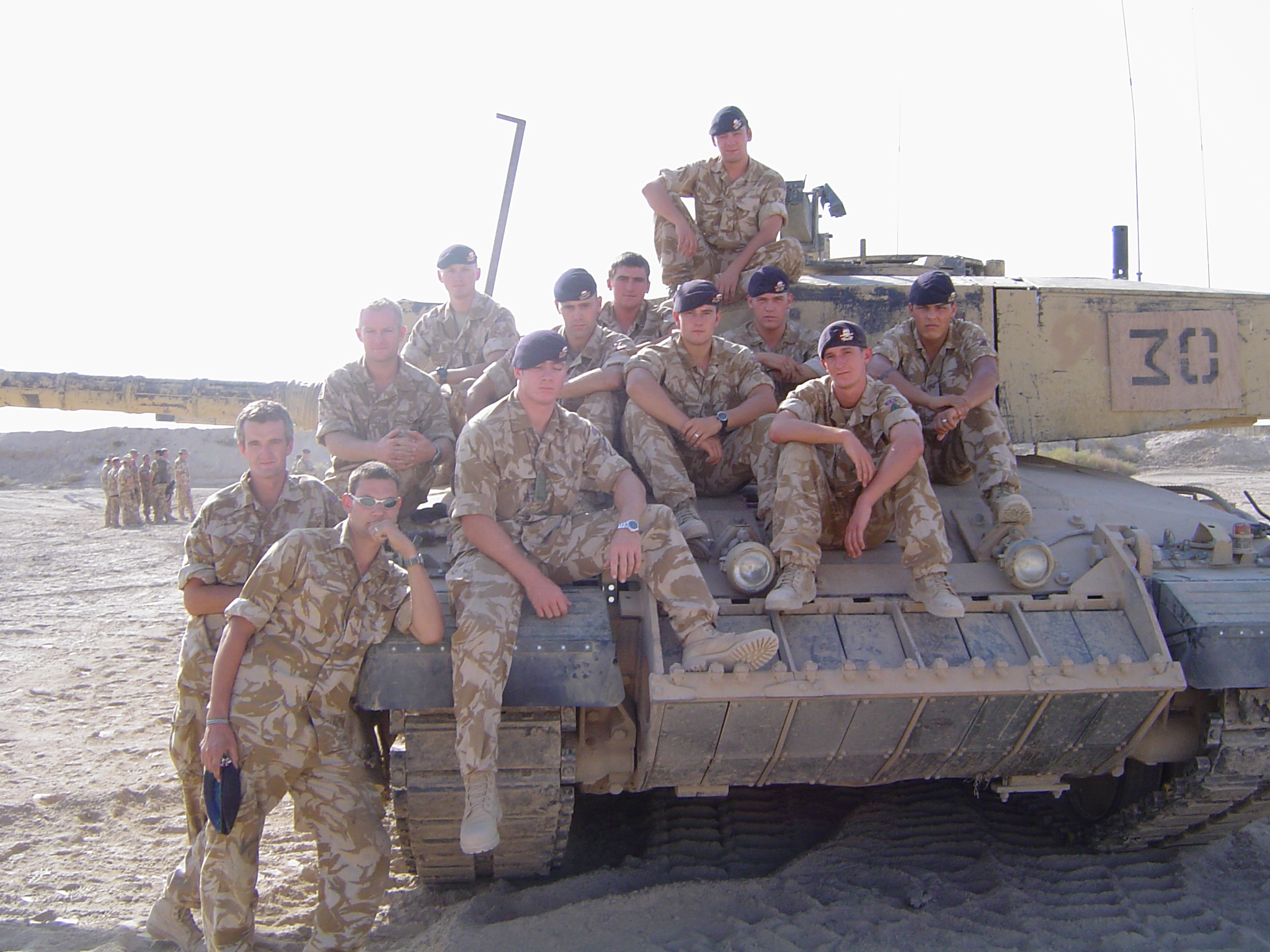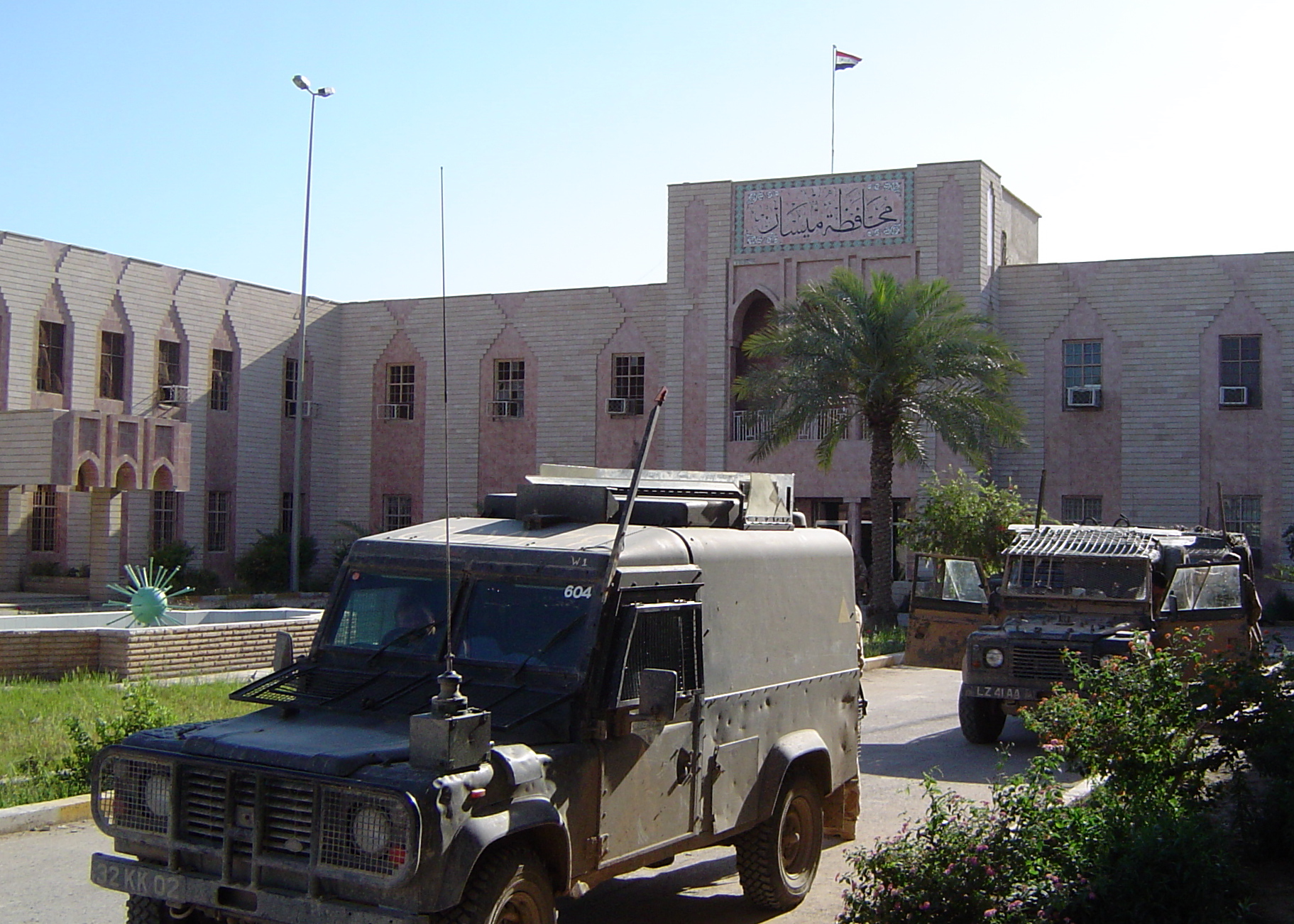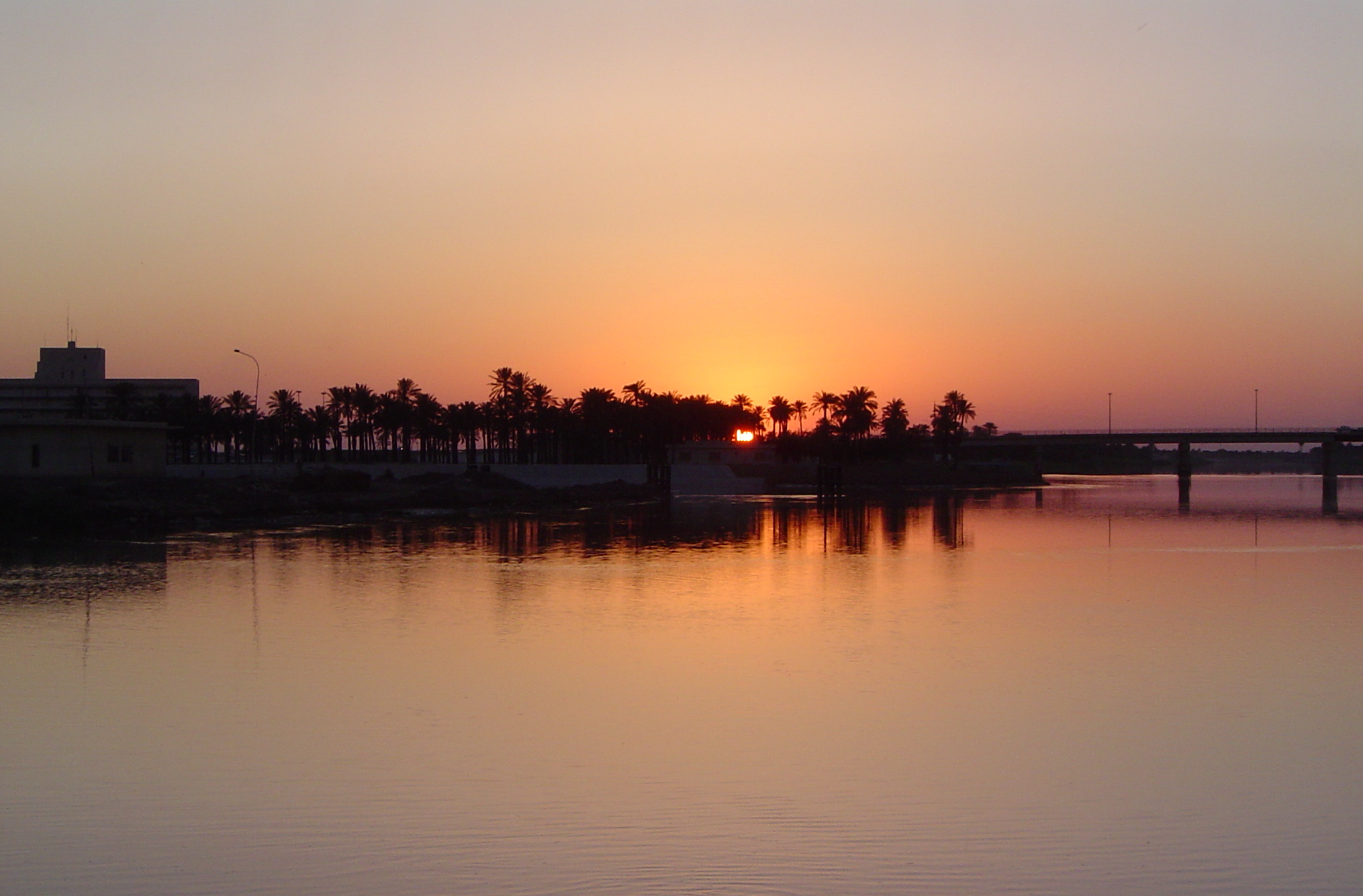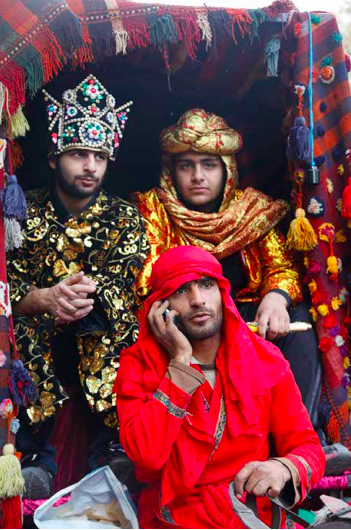It was a peaceful afternoon in Al Amarah thanks to the lack of incoming mortars, rockets and rifle shots. High up on the rooftop of the Pink Palace—once the home, before the 2003 invasion of Iraq and its commandeering by the British Army, of the governor of the surrounding Maysan region—I scanned the surrounding buildings through my SA80 rifle’s telescopic sight.
The 4x-magnified image came to rest on an Iraqi woman hanging laundry on the roof of a building about a hundred meters away. She spotted me and began waving an arm in my direction. Rather than being perturbed by the position of my rifle, as you might expect, she was beckoning me toward her. In all the years since my tour there in 2004 with the British Army’s A Squadron of the Queen’s Royal Lancers, I’ve never figured out why. Might it have been some sort of honeytrap? I suspect most probably she was just fooling around—a friendly gesture in defiance of the war going on around us. Either way, it suggested—as did other encounters—that not all the locals necessarily viewed us as a malign occupying force, or that if they did, they were willing to give us the benefit of the doubt on an individual level.

Certainly, not all of us had gone out to Iraq to “occupy,” rather (even though it almost feels embarrassingly naive to say this after all that transpired) to protect and help. In a strange way, perhaps Al Amarah itself had a sense of this and despite all we got wrong, as the situation deteriorated, it bequeathed to us a strange type of combat experience that I can’t help but think back on fondly.
Located in southeastern Iraq, sequestered at the northern tip of the marshlands between the Tigris and Euphrates rivers, Al Amarah was founded in the 1860s as an Ottoman military outpost from which the empire tried to control local warring tribes. It became the administrative capital of Iraq’s Maysan province, bordering Iran, and a major trading center for the surrounding agricultural area, known for its woven goods and silverware.
During the first Gulf War it was a site of local uprisings against Saddam Hussein, who resorted to a crude tactic of draining the marshes surrounding Al Amarah to deprive the population of water. As a result, throughout the ‘90s, the city’s population swelled with refugees from the marshes, and was around 400,000 when I arrived (us Brits having already been there before, when we captured the city in 1915).
Al Amarah had a reputation for being out in the sticks, somewhat marooned from the country’s main urban focal points, about 230 miles southeast of Baghdad and about 125 miles north of Basrah. We got there via a Hercules transport plane, landing in the middle of the desert on a former Iraqi Air Force runway, before a bumpy ride in four-ton trucks. I imagine it should be easier to reach now, or at least without the last-minute steep dive to land executed by the pilot trying to avoid any incoming enemy fire.
The ungenerous visitor might easily take one look at Al Amarah under the midday sun and describe it as an unbearably remote and sweltering hole. But the experience of fighting there showed it to be full of unexpected moments, such as that one atop the Pink Palace. With the Chinook helicopters slicing through the heat haze, and mortar illumination rounds falling like fiery teardrops throwing shifting shadows on the desert floor, it all contributed to my first taste of war proving an intoxicating experience. As my six-month tour in Al Amarah progressed, I felt an increasing fondness for the place, accompanied by occasional musings on its potential as a travel destination—were there not a war on. It was the best time of my life, and yet that memory coexists with the mind-numbing sadness at how it all turned out; the unfathomable human and financial cost of the conflict.
In the years that followed, I’ve often considered what it would be like to return—as a civilian—to revisit those parts of the city I got to know from the turret of my 72-ton battle tank, or from where I patrolled on foot, weaving through alleys to flush out those insurgent teams who were firing mortars and rockets at us.
It was the best time of my life, and yet that memory coexists with the mind-numbing sadness at how it all turned out
Admittedly, I encountered parts of the city that didn’t inspire: sun-blasted, fetid alleys and depressing-looking tenement blocks, their inhabitants stunned into torpidity by the ferocious heat. But it never seemed long before I’d encounter an element of redeeming beauty or whimsy. The first time I went into the city—traveling from Camp Abu Naji, our main military base, located a couple of miles southwest from the city, to CIMIC House, the small outpost in the center of the city where the army liaised with locals over community projects—that journey turned into a surprisingly scenic drive as our heavily armored Land Rovers left the desert and picked up the Tigris River languidly flowing through the city. Suddenly we were driving amid a Biblical landscape of palm trees and greenery beside glittering waters, and I tried to maintain my focus on the mission to hand, telling the soldiers sticking out of the vehicle roofs providing top cover to keep a beady eye out for the enemy.
That evening at the CIMIC House compound, I sat outside at a white plastic table, eating dinner and gazing over the wide shimmering expanse of the Tigris, above which hovered the lowering red orb of the sun.

At that point of the deployment, before CIMIC House was besieged on all sides by incessant attacks, the whole side of the compound facing the river was entirely open, free of the protective barricades that were to come, affording an unimpeded and majestic view. “There should be an outdoor restaurant here,” I thought to myself. With midday temperatures that could exceed 122 degrees, the early evening temperature of 104 felt pleasantly balmy by comparison. I relaxed in my chair, forgetting my sweaty combat clothing, and as my fellow officers discussed forthcoming operations, guard routines and the manning of tanks, I imagined the glow of bare shoulders and elegant dresses and the pouring of wine and clinking of glasses in my would-be riverside restaurant fantasy.
Indeed, Iraqi cuisine, like most Middle Eastern food, is well worth tasting—with a long history going back thousands of years—not that we had much chance to sample it on tour, though. In the camp cookhouse the army chefs prepared solid British fare, while the rest of the time it was usually boil-in-the-bag rations. I once attended a lunch put on by local Iraqi police, and the spread was phenomenal: lots of color and smells with the likes of rice, salads, vegetables, chickpeas and various meats piled on multiple silver dishes surrounded by cushions for sitting on the floor.
Like its food, and especially its people, Iraq deserves more credit. The bloody horrors that have waylaid the country since the 2003 invasion have obliterated thoughts of its once-glorious past. Iraq has been called the Cradle of Civilization thanks to its ancient Mesopotamian cities once famed for their innovations in science, writing, literature, medicine, theology and law. It is the old home of Babylonia, which used to be the stomping ground of Alexander the Great. The country’s attractions include breathtaking mountains, vibrant cities and numerous archaeological sites of Ozymandias-like wonder, and always a warm and hospitable population.
The famous crime novelist Agatha Christie visited Iraq before its independence from Britain in 1932 and lived for a time in the city of Nimrud. Her visits inspired her novel Murder in Mesopotamia, and she began writing her autobiography in Nimrud. Christie felt similarly about what she encountered as I did. “What a beautiful spot it was,” she wrote. “The Tigris was just a mile away, and on the great mound of the Acropolis, big stone Assyrian heads poked out of the soil…It was a spectacular stretch of country–peaceful, romantic and impregnated with the past.”
Admittedly, any sense of peacefulness became increasingly hard to find in Al Amarah as the Mahdi army—the insurgent group led by cleric Muqtada al Sadr—stepped up its attacks. But still this small city of less than 500,000 souls, of which I had never heard of before I went there, and about which there is next-to-nothing written beyond its forced-upon connection to the Iraq War, exerted a strange power over me.
Its ability to conjure transcendence amid the violence consuming the country was both perplexing and spellbinding. Near the end of what I remember as the hottest, sweatiest and most exhausting midday foot patrol, I signaled to the patrol to take a knee on the sidewalk. My CamelBak was empty of water, my lips cracked and my shoulders ached from the heavy radio. The wizened head of an old man appeared from a shack off to the side, before disappearing. A few moments later he reappeared, carrying a silver tray with a steaming cup of tea. Slinging my rifle to the side, I took the cup uttering an Arabic “shukran” in thanks, while the man grinned and nodded. Swirling with sugar particles, the sweet liquid was like a monsoon to my parched insides.
Its ability to conjure transcendence amid the violence consuming the country was both perplexing and spellbinding.
One night I was lying with my soldiers in an ambush position beside a road, trying to catch a mortar team in a part of town renowned for housing the enemy. Initially we were buzzing with the prospect of what might happen, but thoughts of heroics rapidly diminished as the hours passed. Our eyelids began to droop, lulled by the balmy night air and surrounding silhouettes of palm trees, their fronds swaying gently in a breeze. Also, I realized I did not want any mortar team to turn up and spoil such a tranquil scene, added to which I simply wasn’t in the mood for dispensing death and justice after being steeped in the sublime nocturnal spirit of Al Amarah. That said, it’s oft-repeated about how pretty machine gun tracer looks at night—majestic arcs of intermittent red lines looping a low-slung dome over Al Amarah in the darkness.
You can’t separate Al Amarah, or Iraq, from the context of the imperious beauty of the desert. Sometimes it was haunting, particularly at night seen from a quiet runway while waiting for a flight; or it was uplifting, like when I turned around in the turret of my tank, looking back over the commander’s cupola at 20 armored vehicles kicking up curtains of sand against the light-blue sky as the column sped across the smooth desert toward Al Amarah.
For me, Al Amarah played the starring role in all this; a central character in this peculiar conflict of contradictions. Bad things happened on the tour, and too many of us made mistakes, which might partly explain why I have a sense of Al Amarah as a generous, sympathetic entity—and hence my owing it.
I know I have to return. I want to see what now stands where the giant sandy barriers once encircled Camp Abu Naji. After the British pulled out, the camp was ransacked by locals. I want to experience the view again from atop the Pink Palace, and stand in the same spot where I’d had dinner that night beside the banks of the Tigris.
After I left the army in 2010 and headed to journalism graduate school in Texas, I went through a phase of trying to write poetry about my military experiences in Iraq—and those in Afghanistan—much of which centered on my experiences in Al Amarah:
“Is he still there serving his tea?
While the Tigris and Euphrates glitter
In Al Amarah and other Iraqi towns,
Where sweet tea now swirls bitter.”
As my veteran’s rancor has somewhat abated in the years since, I like to think that maybe the tea doesn’t necessarily swirl bitter, and Al Amarah has—or is—recovering, and that the friendly women are hanging their washing on the rooftops with hope in their hearts. Maybe I might even be welcome to return.

Contributor
James Jeffrey is a freelance journalist who splits his time between the Horn of Africa, the U.S., and the UK, and writes for various international media.



